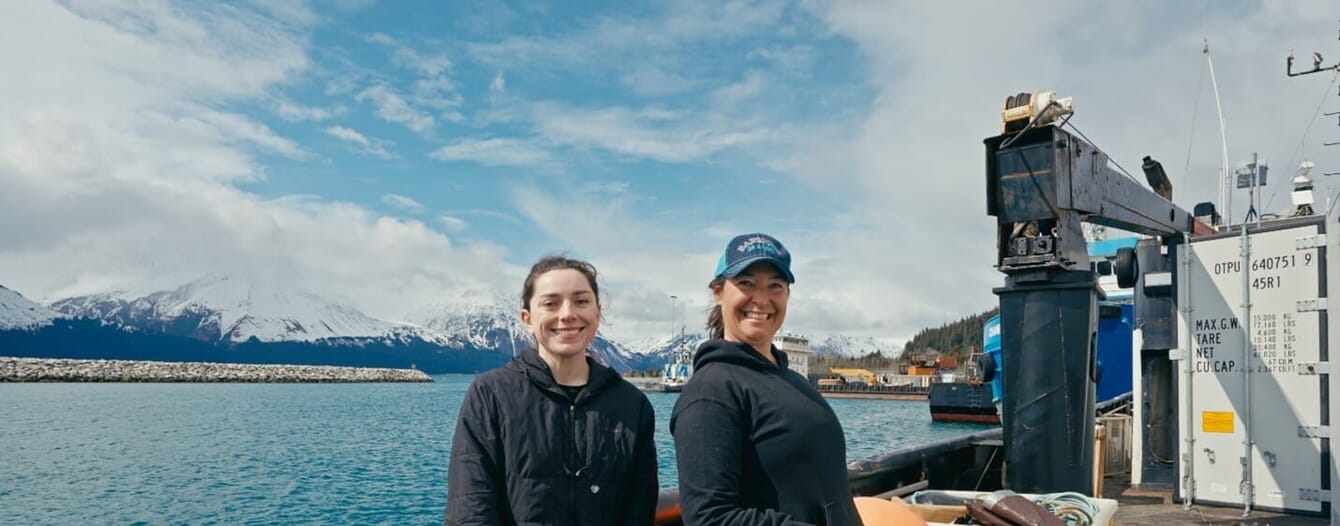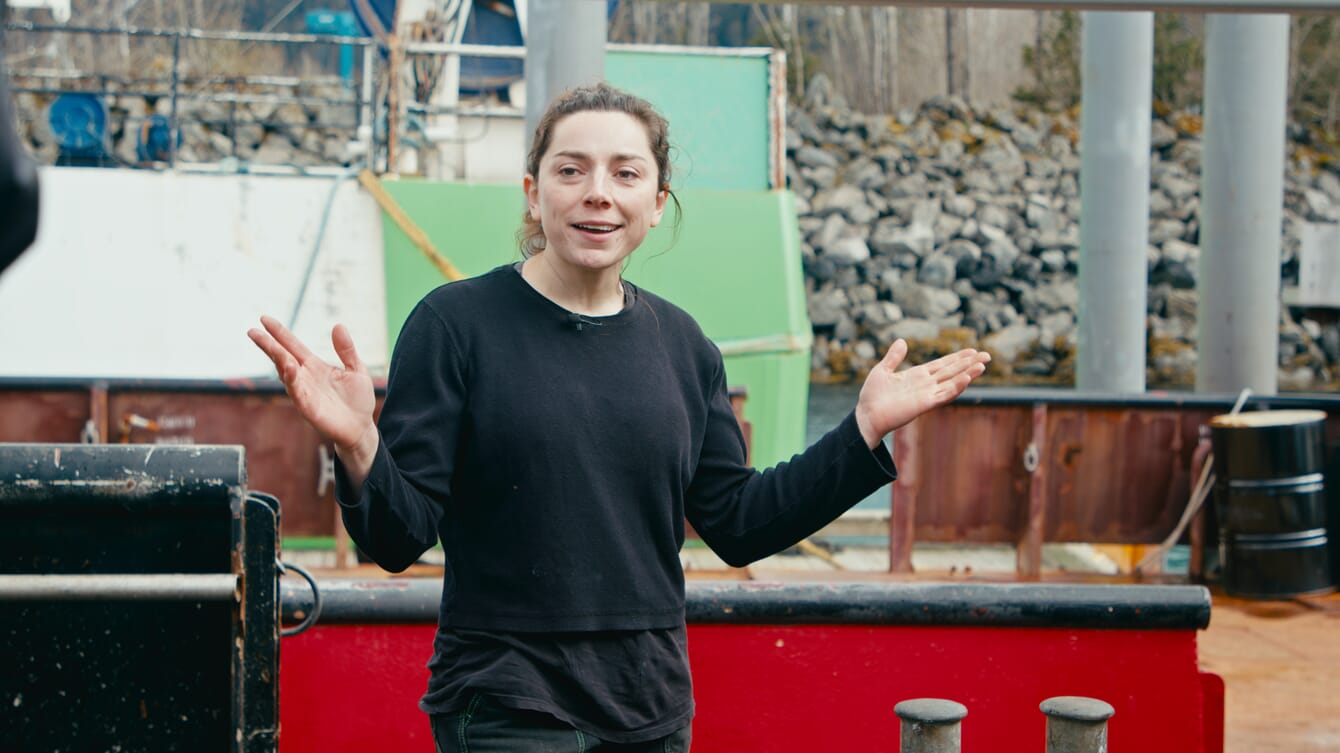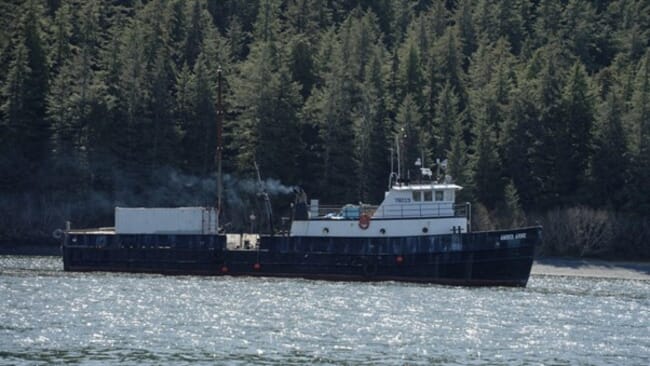
© The Fish Site / Hatch Innovations Services
Game of Thrones might have its Mother of Dragons, but Alaska has its Mothers of Millions.
First starting as a fishing outfit, it has evolved into a hybrid operation, fishing in the summer and culturing fast-growing kelp the rest of the year.
The cool, clear waters of Alaska host some of the largest and most productive kelp beds on Earth and Alaska’s mariculture industry is starting to farm macroalgae too – including sugar, bull and ribbon kelp – to supply food, pharmaceuticals and fertiliser, while providing natural regenerative services like carbon sequestration and combating oceanic acidification.
Operated by friends Kristen Smith and Briana Murphy, Mothers of Millions has mobile hatcheries and seaweed processing facilities that operate mainly in South Central Alaska. The company has five boats that turn into kelp hatcheries and processing facilities off-season.
“We’re basically the mobile version of the kelp industry,” shares Kristen. “Simply put, we’re commercial fishermen who use our assets off-season to run a farm, hatchery and mobile processing facility.”
Born and raised in Alaska, Murphy fished with her family each summer from the age of 11.
“I eventually moved to New York and worked in publishing, but I really missed Alaska, especially fishing,” she reflects.
Murphy met Smith in 2015, seining in Alaska and eventually spent a fall season working with her in California’s squid fishery.
Murphy left the fishery in 2017, but reflects that: “Kristen stayed on as she’s always juggling a million projects. She moves a million miles an hour: she's like the Taylor Swift of the fishing industry.”
Smith grew up in Alaska and fell in love with seining after crewing on a fishing boat for a year.
“It was hands down the funnest job I ever had. I was a nuclear physicist before I started fishing, doing international nuclear politics work in London and travelling the world,” she reflects.
But the lure of one last fishing trip proved irresistible.
“I wanted just one more fishing trip to purge it out of my system, except it never really did. I ended up spending my entire crew share from that summer as a down-payment for a permit!” she recalls.

© The Fish Site / Hatch Innovation Services
Smith went on more adventures up and down the west coast, fishing for sardines in Washington, squid in California and of course, salmon in Alaska. In 2020, she asked Murphy for help to set up a kelp venture.
The duo submitted an aquatic farm application in 2020, securing a seaweed culture permit in Seward.
“We started attending a whole bunch of webinars and learning more and more about the mariculture industry. We literally ‘learned the ropes’ of the kelp industry. Things slowly snowballed once we got our hatchery permit. We actually have three hatchery permits now, covering all the ports where we want to operate,” she explains.
Mothers of Millions runs a seasonal modular hatchery, using a shipping container loaded onto the back deck of one of Smith’s salmon tenders.
“Our hatchery only runs for six to eight weeks and is almost completely off-grid. Around 95 percent of our power comes from solar panels and wind turbines. We also designed our operations to have minimal energy requirements. We try to be efficient to make costs worthwhile,” Smith explains.
Smith and Murphy have also wisely followed the trends of optimisation.

© The Fish Site / Hatch innovation Services
“Everything is automated. The lights turn on and off on timers. The heaters come on only when the temperature gets low enough to be a problem. We only regulate the air and not the water since water takes too much energy to heat,” Smith notes.
As a result, the hatchery can be run by one person for just an hour a day.
Their unique mobile operation allows them to collect sorus (reproductive kelp tissue) from wild kelp beds, processing them onboard to encourage spores to settle on coiled nylon grow lines.
Once the kelp is ready for harvesting in spring, the grow lines are hauled up, rinsed, then cut or shredded, depending on client specifications. Workers quickly pack the product into blocks which are frozen – sealing in freshness and nutrients. The blocks are then stored in vessel holds or insulated containers.
“Our boats can store 300,000 pounds in the fish holds. We freeze small portions so we can quickly set aside 20, 30 pounds... or whatever amounts are requested by our clients,” notes Smith.
The advantages of mobile operations are obvious, according to Smith.
“We have access to clean water, which we can literally pump up from under the boat. We can harvest an entire farm in a day and then head back to town where labour is easier, where work crews aren’t exposed to the weather and where we can process products at our own leisure,” she points out.

© The Fish Site / Hatch Innovation services
Seaweed farming has really taken root in Alaska, growing from less than 100,000 pounds in 2017 to around 900,000 lb in 2022, according to a report by the National Oceanic and Atmospheric Administration (NOAA). Aside from generating food and livelihoods, Alaskan kelp farms help shelter herring, otters and other creatures.
Valued at about $10 billion, global seaweed production is currently dominated by China and other Asian countries, according to the World Bank. With over 500 known seaweed species, including some of the fastest-growing types on the planet, Alaska’s contribution is really taking root, with many exciting growth opportunities for mariculture.
For Murphy, mobile mariculture is the perfect marriage of fisheries and aquaculture.
“I think it's great to see so many people investing in regenerative strategies which are also a great food source, while allowing economic diversification to revitalise our coastal communities in Alaska,” she reflects.
Through their example, these two Mothers of Millions are showing how fishers can put their idle equipment to work off-season – boosting profits, generating new jobs and providing extra seafood products.
*This article is part of a project commissioned by the SEC to highlight the region's mariculture sector. To learn more about the sector visit https://alaska.seaweedinsights...








